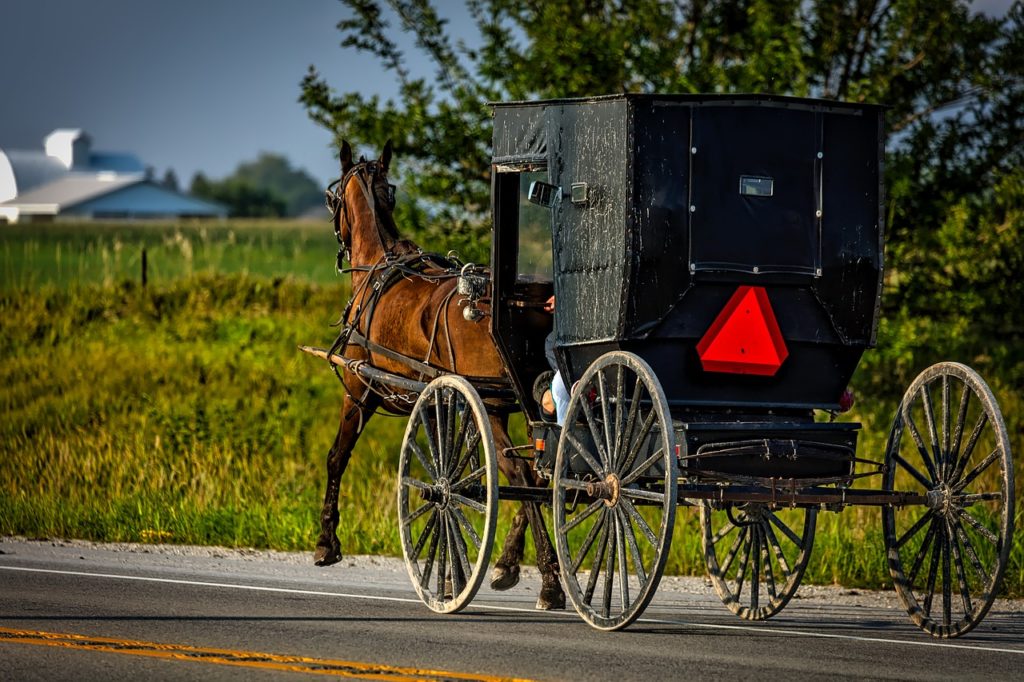
Article Summary: Historic Sites In Iowa
Historic Sites In Iowa. More Than Just Parks has 10 incredible must-see sites for you to visit.
I’ve been to so many of these amazing places since retiring from teaching in 2018. Did I mention that I taught history? I spent a lifetime teaching about the history behind these momentous sites. Then I got to see them firsthand. And now I’m sharing the stories of these incredible places with you. It doesn’t get any better than that!
I’m going to give you my list of the 10 Historic Sites In Iowa that you’ll want to see.
To be clear, this list includes national park sites (as in sites managed by the National Park Service) as opposed to national parks. It also includes sites not managed by the National Park Service. After all, we’re more than just parks!
If you are planning a trip to Iowa then you might want to pick up a copy of Oddball Iowa: A Guide to Some Really Strange Places by Jerome Pohlen.
Without further ado, let’s dive in.
Table Of Contents: Historic Sites In Iowa
Top 10 Historic Sites In Iowa
10. Sergeant Floyd Monument & Towboat
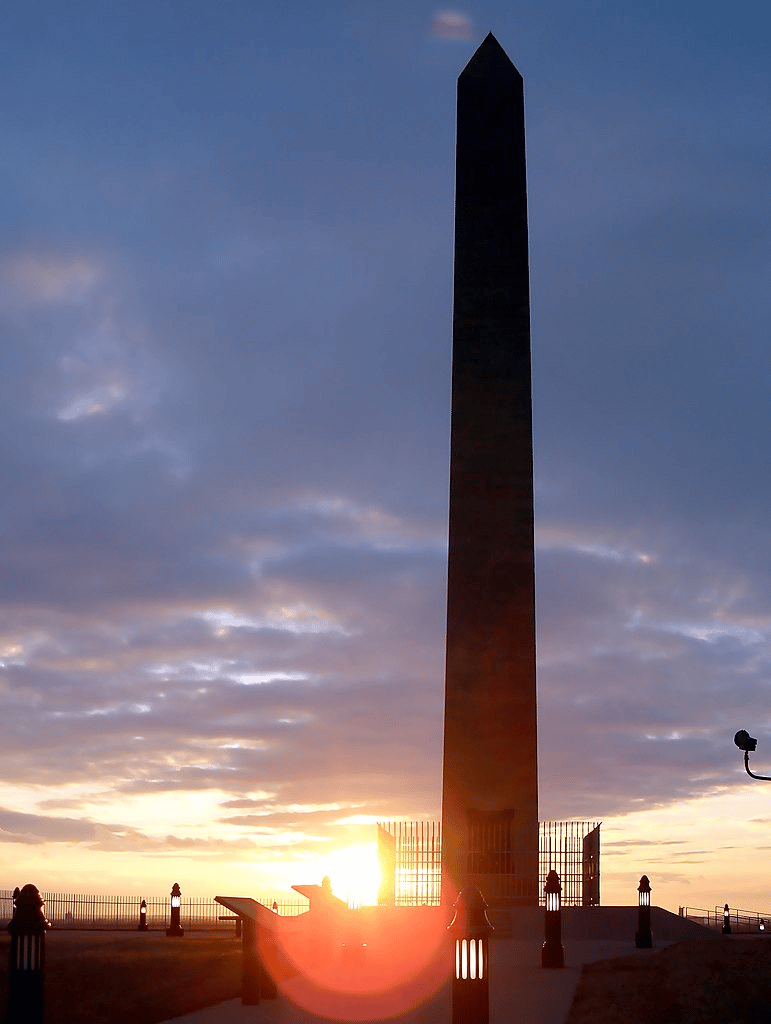
Is this heaven? No, it’s Iowa, but it’s heaven too. And More Than Just Parks has 10 Heavenly Historic Sites for your next visit to the Hawkeye State. We’re beginning our list of those 10 heavenly sites at #10 with the Sergeant Floyd Monument & Towboat.
The Sergeant Floyd Monument & Towboat is located in Sioux City, Iowa, at the confluence of the Missouri River and the Floyd River.
The monument is dedicated to Charles Floyd, a sergeant in the Lewis and Clark Expedition who died near the site in 1804, and is the only member of the expedition to have died during the journey.
The monument consists of a 100-foot (30 meter) obelisk made of Sioux quartzite, which is the tallest point in Sioux City. At the base of the obelisk is a museum that tells the story of the Lewis and Clark Expedition and the life of Charles Floyd. The museum features exhibits, artifacts, and interactive displays that bring to life the history of the area and the people who lived there.
In addition to the monument and museum, the site also includes a full-size replica of the historic towboat, the M.V. Sergeant Floyd. The towboat, which is permanently docked at the site, is a replica of the original towboat that plied the Missouri River during the mid-20th century.
Sergeant Floyd Towboat
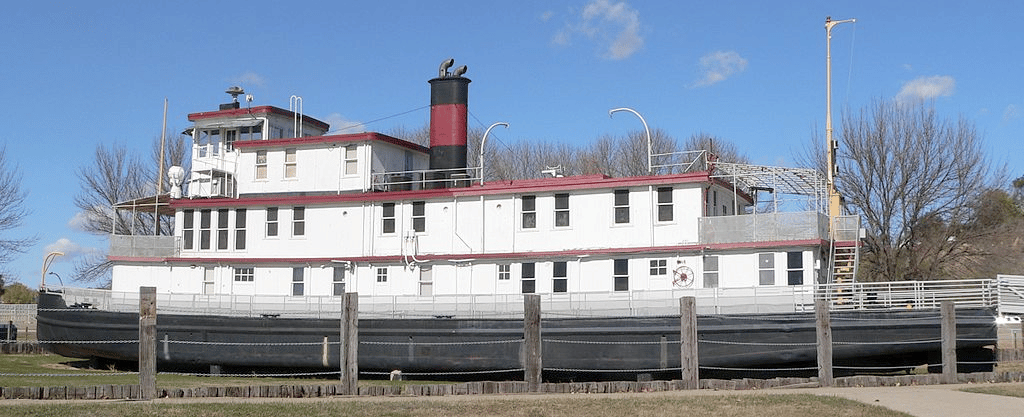
The Sergeant Floyd Towboat is a diesel inspection ship that served as the flagship of the U.S. Army Corps of Engineers construction fleet for 50 years.
Things To Do
Here are some things you can do while visiting the monument and towboat:
- Visit the monument: The monument is a 100-foot obelisk that was built in 1901 in honor of Sergeant Charles Floyd, who was the only member of the Lewis and Clark Expedition to die during the journey.
- Explore the visitor center: The visitor center features exhibits about the expedition and the life of Sergeant Floyd. You can also watch a short film about the expedition.
- Tour the towboat: The towboat is a replica of the type of boat used during the 19th and early 20th centuries to transport goods up and down the Missouri River. You can tour the boat and learn about its history.
- Walk the trails: There are several trails around the monument and towboat that offer scenic views of the Missouri River and the surrounding area.
- Attend events: The monument and towboat host several events throughout the year, including living history demonstrations, lectures, and music festivals.
- Have a picnic: There are picnic areas near the monument and towboat where you can enjoy a meal with family and friends while taking in the beautiful scenery.
- Shop at the gift shop: The gift shop offers a variety of souvenirs and gifts related to the Lewis and Clark Expedition and the Sergeant Floyd Monument & Towboat.
9. Mines of Spain Recreation Area
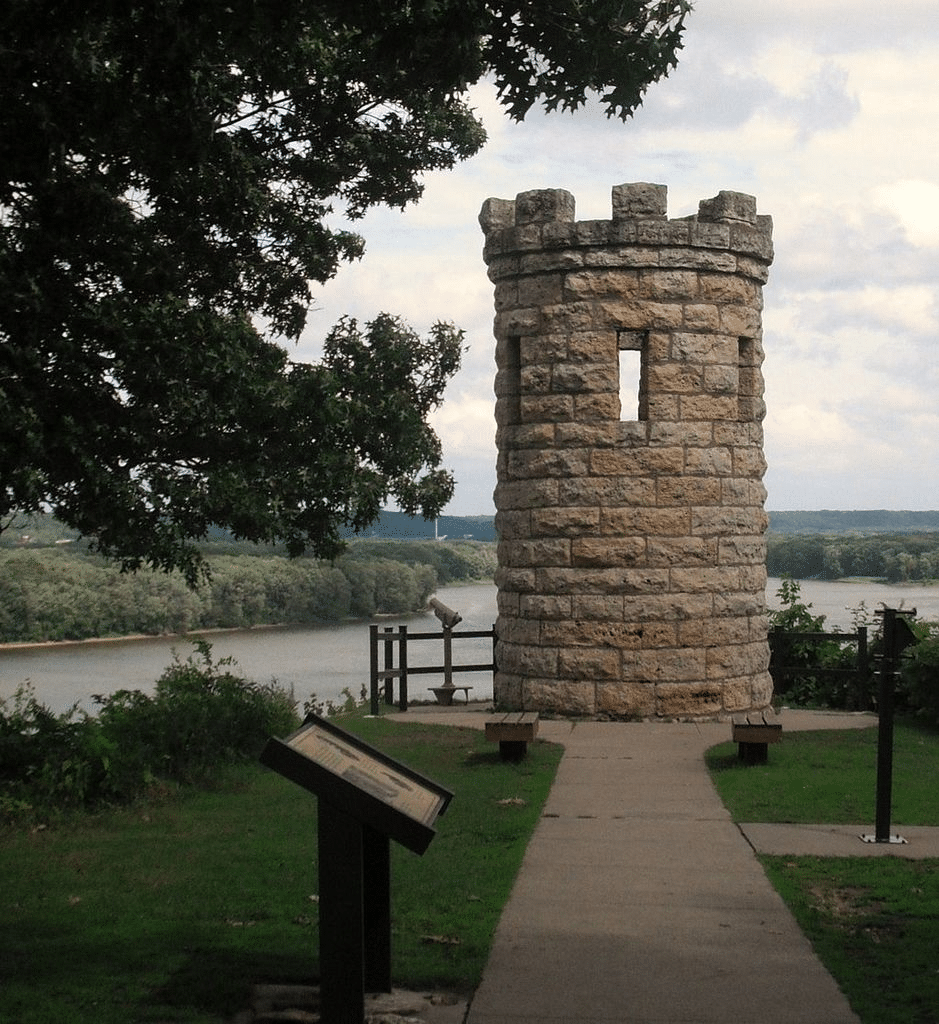
Imagine a place that’s rich in history and natural resources, with village sites, rock shelters and trading post sites which dot the landscape. Actually, you don’t have to imagine. It’s our #9 site on our list of the Best Historic Sites In Iowa. Welcome to the Mines of Spain Recreation Area.
The Mines of Spain Recreation Area is located near Dubuque, Iowa and includes the Julien Dubuque’s Mines and the Hodge Park.
The area is named after Spanish explorer Julien Dubuque, who arrived in the region in the late 1700s and began mining lead in the area. Dubuque’s mining operations were the first in the region and were instrumental in the development of the lead mining industry in the area.
It’s A Park With Many Recreational Uses
The area was acquired by the State of Iowa in the early 1900s and was developed as a state park in the 1920s. The park was used for recreational purposes, including hiking, picnicking, and camping, and also served as an educational center for the study of natural history and geology.
In the 1970s, the park was expanded to include the Hodge Park, which is located on a bluff overlooking the Mississippi River and contains several historical buildings, including the home of Julien Dubuque, a restored blacksmith shop, and a visitor center.
Today, the Mines of Spain Recreation Area is a popular destination for visitors interested in history, nature and recreation. The park includes several hiking trails, picnic areas, and a campground, as well as several historical sites and educational programs.
The park also offers visitors the chance to learn about the history of the lead mining industry and its impact on the region, and to explore the natural beauty of the area.
8. Buffalo Bill Museum

Our next site is a must-see. It’s a western history museum about the museum’s namesake, as well as some of the biggest characters in the West like Annie Oakley, Sitting Bull, Pawnee Bill, and other members of the Wild West Show.
At #8 on our list of the Best Historic Sites In Iowa is the Buffalo Bill Museum.
William “Buffalo Bill” Cody
William “Buffalo Bill” Cody (1846-1917) was an American soldier, bison hunter, and showman who became famous for his touring Wild West shows.
As a young man, Cody worked as a buffalo hunter and supplied meat to the Kansas Pacific Railroad workers. He gained the nickname “Buffalo Bill” after winning a contest to shoot 12 bison in a single day.
During the Indian Wars, Cody served as a scout for the US Army, and later became a civilian contractor, supplying buffalo meat to reservations.
In 1883, he created “Buffalo Bill’s Wild West,” a touring show that featured reenactments of cowboy and Indian battles, sharpshooting demonstrations, and performances by Native American tribes, including Sitting Bull. The show toured for over 30 years, both in the US and Europe, and made Cody a household name.
Cody is remembered as a larger-than-life figure who embodied the mythos of the American West. While his shows were controversial and often played fast and loose with historical accuracy, they helped to cement the image of cowboys, Indians, and the Wild West in the popular imagination.

Memorabilia From Cody’s Life
The museum displays artifacts and memorabilia from Cody’s life and career, including weapons, clothing, photographs, and personal effects. It also features interactive exhibits and educational programs that explore the history of the American West and the impact of Cody’s life and legacy on American culture.
The Buffalo Bill Museum in Iowa is one of several museums dedicated to Cody’s life and legacy, and it is considered one of the most authentic and comprehensive collections of Cody-related artifacts and information.
It’s operated by the Iowa Historical Society, which is a non-profit organization dedicated to preserving and interpreting Iowa’s history.
7. General Dodge House
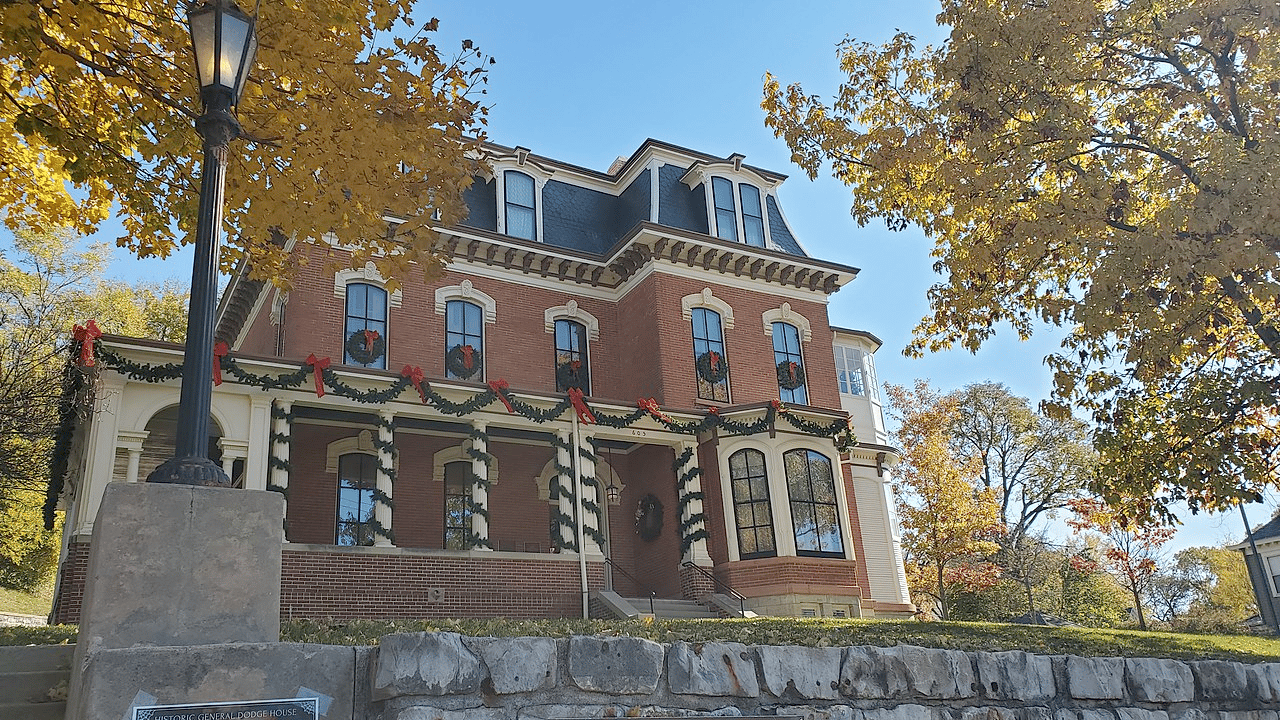
Imagine a The fourteen-room, three-story mansion stands on a high terrace overlooking the Missouri Valley, and displays such architectural features as parquet floors, cherry, walnut and butternut woodwork, and a number of “modern” conveniences quite unusual for the period. Actually, you don’t have to imagine it because you can see it.
It’s on our list of the Best Historic Sites In Iowa at #7.
The General Dodge House is a historic house museum located in Council Bluffs, Iowa. The house was the former home of Grenville M. Dodge, a prominent Civil War general, railroad executive, and politician who played a significant role in the development of the American West.
The house was built in 1869 and features a unique blend of architectural styles, including Italianate, Second Empire, and Gothic Revival. The exterior of the house is characterized by its ornate brickwork, mansard roof, and prominent tower, while the interior is filled with period furnishings and artifacts that give visitors a glimpse into the life and times of General Dodge and his family.
Visitors to the General Dodge House can take a guided tour of the house and grounds, which includes a carriage house, gardens, and a small museum dedicated to General Dodge and the history of Council Bluffs. The museum features exhibits on the Civil War, the Transcontinental Railroad, and the development of Council Bluffs and the surrounding area.
In addition to the museum and tours, the General Dodge House also hosts a variety of special events throughout the year, including Civil War reenactments, Victorian tea parties, and holiday celebrations. The house is open to the public from April through December, with special tours and events offered during the off-season.
6. Farm House Museum
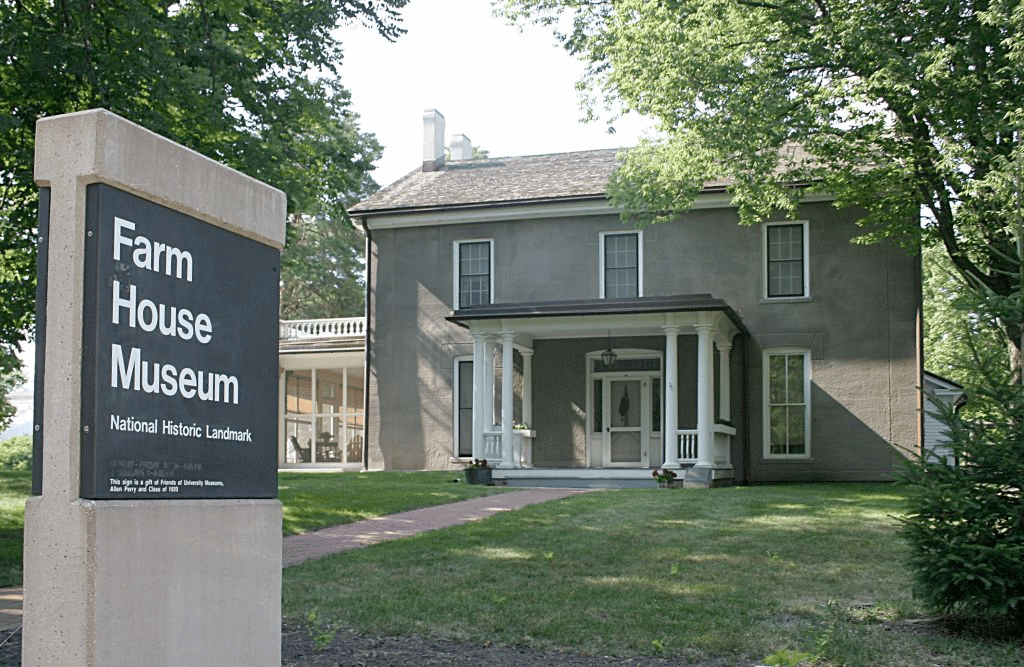
When we develop our lists we try to offer something for everyone and our next site is a case in point. At #6 on our list of the Best Historic Sites In Iowa is the Farm House Museum.
The Farm House Museum is located on the campus of Iowa State University in Ames, Iowa. It’s the oldest building on campus, dating back to 1860, and it is listed on the National Register of Historic Places.
Originally built as a farmhouse by Iowa State’s first president, Adonijah Welch, the house served as the residence for the university’s presidents until 1908. In 1910, the building was repurposed as a student dormitory, and it continued to serve this function until 1965.
In 1966, the building was slated for demolition, but a group of concerned citizens, including former residents of the house and members of the Ames Historical Society, successfully lobbied to have it preserved as a museum. The Farm House Museum opened to the public in 1976, after extensive renovations.
Today, the museum features exhibits that showcase the history of Iowa State University, as well as the lives of the people who lived in the house over the years. Visitors can see original furnishings, artifacts, and documents that offer a glimpse into life on a 19th-century Iowa farm and the early years of the university.
In addition to its exhibits, the Farm House Museum also hosts a variety of educational programs, events, and tours for visitors of all ages. It remains an important cultural and educational resource for the university and the Ames community.
Top 5 Historic Sites In Iowa
5. Lewis & Clark National Historic Trail

We’re on to the Top 5 Historic Sites In Iowa. At #5 we have one of the most famous historic trails in the world. It’s the Lewis & Clark National Historic Trail.
It’s a 4,900-mile trail that follows the path of the Lewis and Clark Expedition, also known as the Corps of Discovery, that was led by Meriwether Lewis and William Clark.
The expedition was commissioned by President Thomas Jefferson in 1803 to explore the western portion of the newly acquired Louisiana Territory and find a water route to the Pacific Ocean.
The trail passes through 11 states, including Missouri, Illinois, Iowa, Nebraska, South Dakota, North Dakota, Montana, Idaho, Oregon, and Washington.
Along the trail, visitors can see historic sites, landmarks, and interpretive centers that highlight the journey and the contributions of the expedition to the knowledge of the American continent.
The trail also offers opportunities for hiking, camping, and other outdoor activities, allowing visitors to experience the natural beauty of the American West.
Lewis & Clark Monument Scenic Overlook
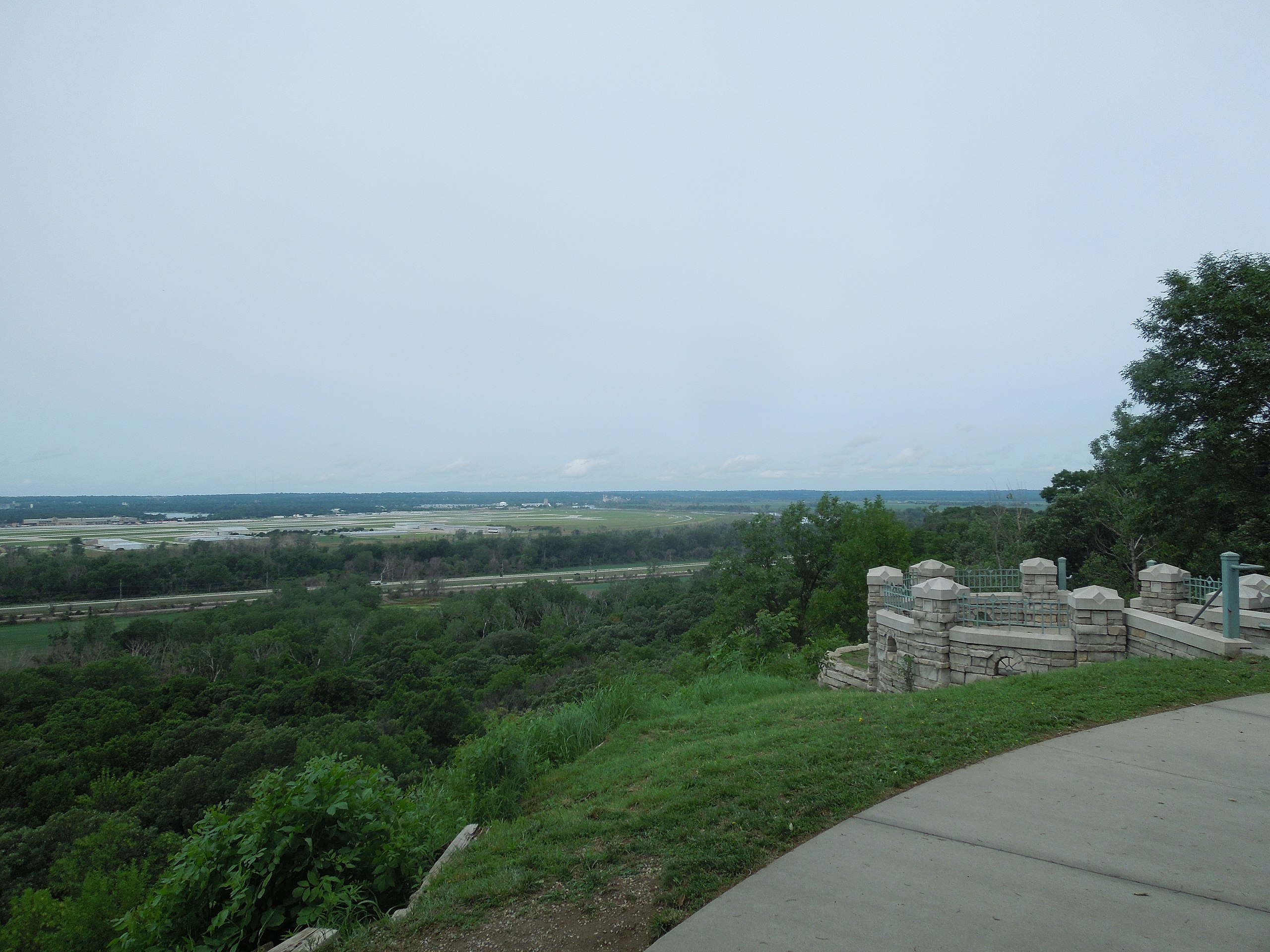
The Lewis and Clark Monument Scenic Overlook in Council Bluffs was dedicated in 1936. It honors the 1804 expedition of Lewis and Clark and their historic meeting with Otoe and Missouri Tribesmen.
The monument depicts an image of the meeting and has text stating “Beneath the bluffs on the Missouri, Lewis and Clark held parley with the Otoe and Missouri Indians and named the locality Council Bluffs.”
Visitors have the opportunity to see some stunning views of the Missouri River, Council Bluffs, and the Omaha skyline. Bring your camera if you go.
The overlook is also home to a popular mountain bike trail.
CHECK OUT: 25 BUCKET-LIST FAMOUS LANDMARKS IN AMERICA (MUST-SEE)
4. Effigy Mounds National Monument
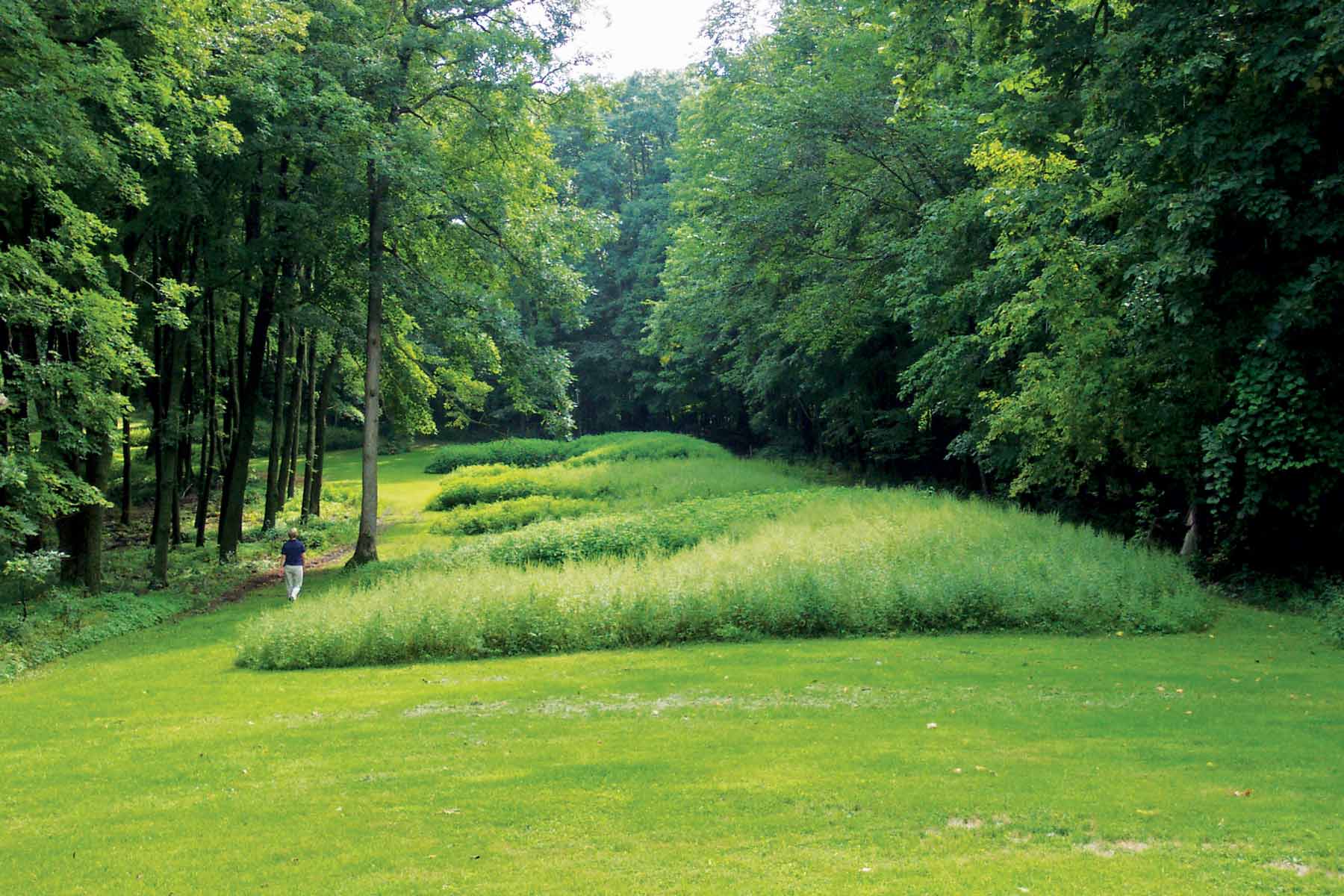
We’re down to the “Final Four.” And at #4 is an amazing Native American site. It’s a sacred plot built by native Americans on mounds in Iowa, Illinois, Wisconsin and Minnesota. Welcome to Effigy Mounds National Monument.
Mounds are considered ceremonial or sacred sites. These prehistoric mounds date back to sometime between 500 B.C. and 1300 A.D. The monument includes 20 culturally associated Native American tribes.
These incredible mounds of earth were built in the shapes of birds, bear, deer, bison, lynx, turtle, panther or water spirit are the most common image. One amazing group of these mounds has 10 bears and three birds, a formation archaeologists call the Marching Bears.
CHECK OUT: 15 MUST-SEE HISTORIC SITES IN OHIO
Incredible Hiking Trails
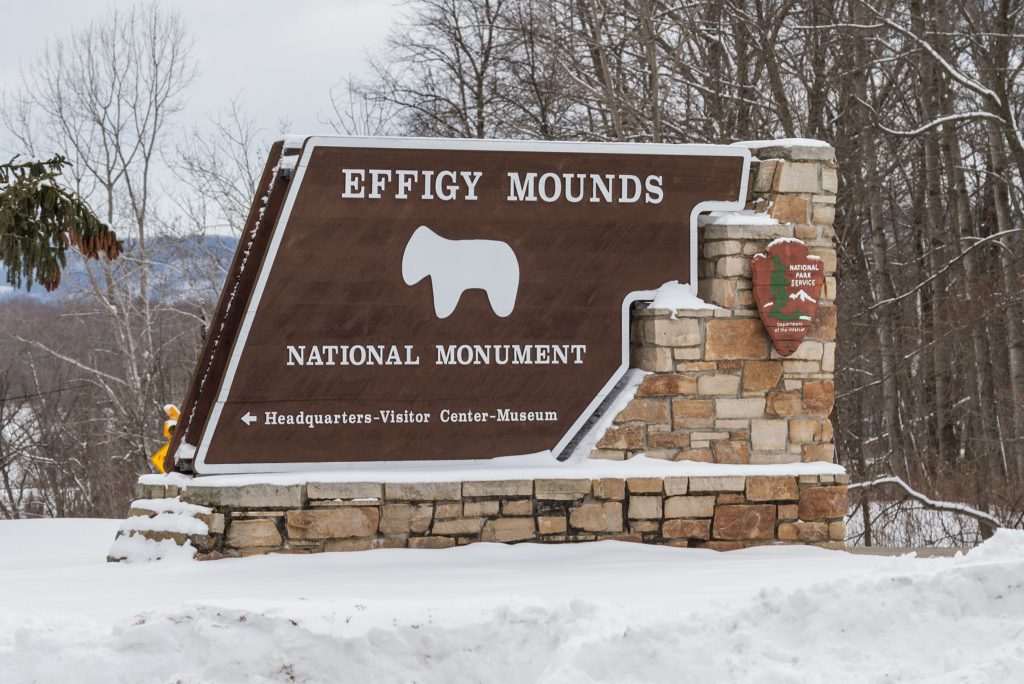
You can explore this incredible site. There are 14 miles of trails throughout this wooded park.
Hiking trails take you through heavily wooded areas and to a lookout point above the scenic river. If you visit during the winter keep an eye out for nesting bald eagles as they perch above the river looking for food.
During the fall the brilliant autumn foliage offers a beautiful example of nature’s magnificence There are scenic roads surrounding the area which provide an amazing view of a idyllic rural paradise. It’s no wonder people have loved coming here for thousands of years.
CHECK OUT: 15 MUST-SEE HISTORIC SITES IN PENNSYLVANIA
3. Mormon Pioneer National Historic Trail
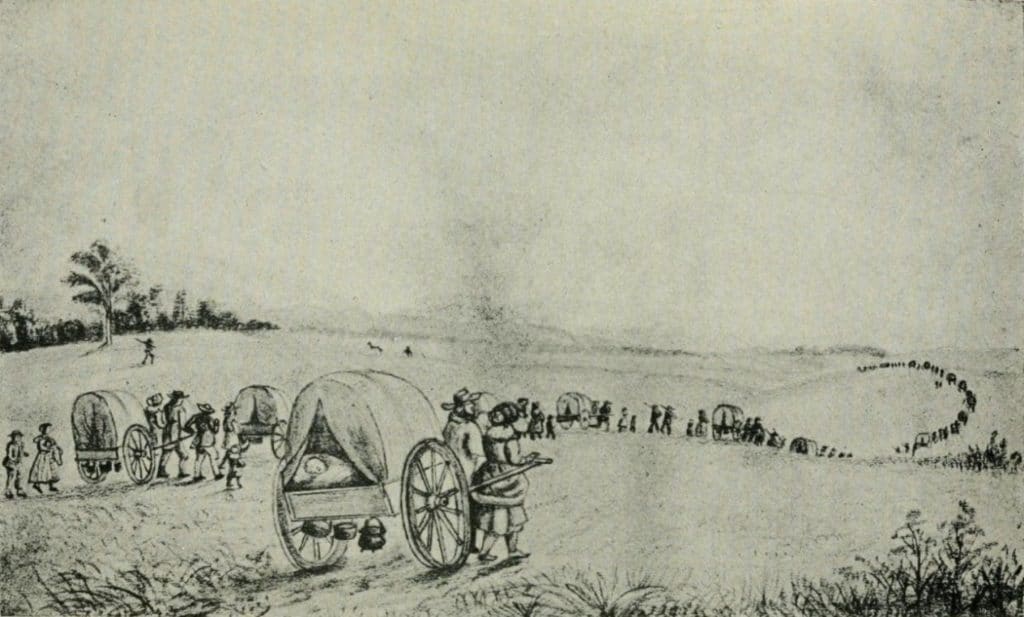
On our list of the Best Historic Sites In Iowa you get not one, but two famous historic trails. At #3 on our list is the other historic trail – the Mormon Pioneer National Historic Trail.
This incredible trail stretches for about 1,300 miles across five states in the United States: Illinois, Iowa, Nebraska, Wyoming and Utah.
The trail follows the route that was taken by members of The Church of Jesus Christ of Latter-day Saints (LDS Church), also known as Mormons, as they migrated westward in the mid-to-late 1800s to escape persecution and establish new settlements.
The Mormon Pioneer Trail begins in Nauvoo, Illinois, where the LDS Church was founded in 1830 and where the Mormons established a thriving community. However, due to increasing persecution and violence against the Mormons, they were forced to leave Nauvoo in 1846.
They traveled along the Mississippi River to Iowa, where they established temporary settlements before continuing their journey westward across Iowa and Nebraska.
A National Historic Trail
The trail then turns northwest, crossing the Missouri River into present-day Wyoming, where the Mormon pioneers established the first permanent settlement in the area, Fort Bridger. From there, the trail continues through the Rocky Mountains into the Salt Lake Valley in Utah, where the Mormons established the city of Salt Lake City in 1847.
The Mormon Pioneer Trail was officially designated as a National Historic Trail by the U.S. Congress in 1978 to commemorate the sacrifices, struggles, and accomplishments of the Mormon pioneers.
Today, the trail is managed by the National Park Service and is open to the public for hiking, biking and horseback riding. Visitors can also see historical markers, monuments, and restored structures along the trail, which help to tell the story of the Mormon pioneers and their journey.

CHECK OUT: 15 MUST-SEE HISTORIC SITES IN TEXAS
Historic Points Of Interest Along The Mormon Trail
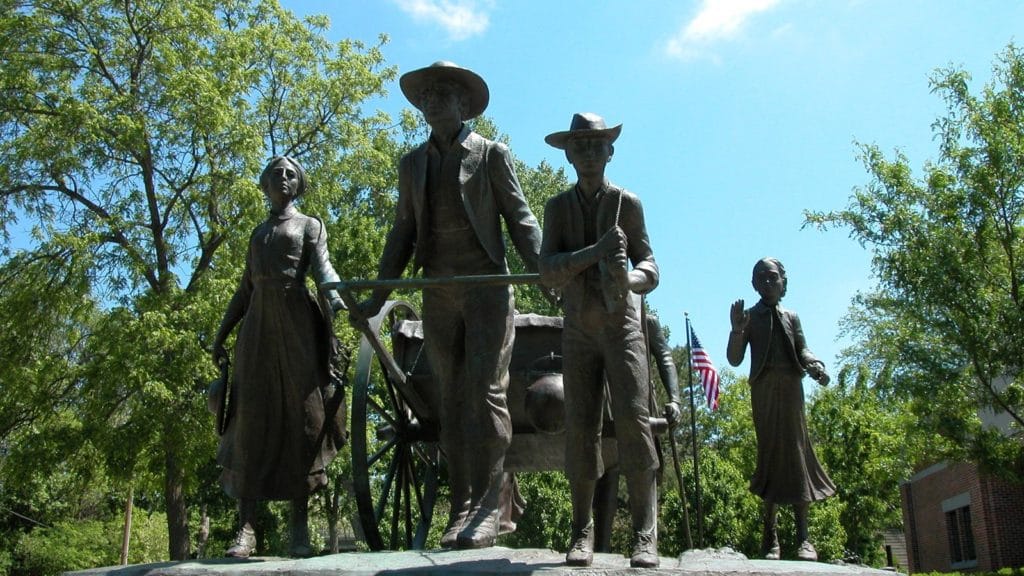
There are 24 historic sites or interpretive facilities on the Mormon Pioneer National Historic Trail in Iowa for you to visit. They include the following:
- Linger Longer Park
- Riverfront Park
- Sugar Creek
- Des Moines River Ford
- Bentonsport National Historic District
- Van Buren County Courthouse
- Richardson’s Point
- Davis County Historical Complex
- Drakesville Park
- Chariton River Crossing and Campsite
- Prairie Trails Museum of Wayne County
- Locust Creek Campsite
- Garden Grove Historic Site
- Clarke County Historical Museum
- Murray Trail Exhibits
- Seven-Mile Creek Campsite
- Mount Pisgah Historic Site
- Bank of Memories Museum
- Mormon Trail County Park and Lake
- The Pote Farm Ruts
- West Nishnabotna River Crossing
- The Grand Encampment
- Western Historic Trails Center
- Kanesville Tabernacle & Visitor Center
To learn more about this fascinating chapter in our nation’s history, I recommend Handcarts to Zion: The Story of a Unique Western Migration by LeRoy R. Hafen & Ann W. Hafen.
2. Herbert Hoover National Historic Site
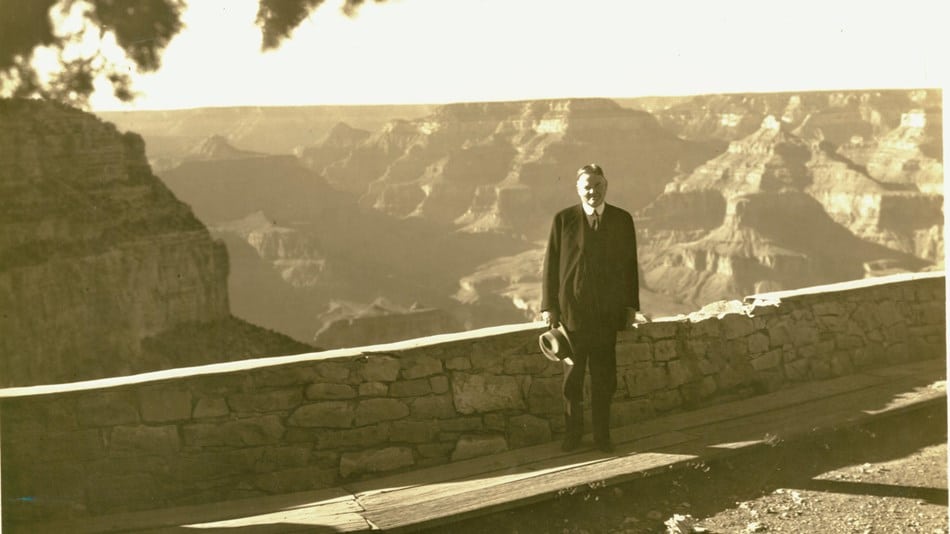
We’re down to the final two historic sites in the Hawkeye State. In the runner-up spot at #2 on our list of the Best Historic Sites In Iowa is a place which commemorates one of the most consequential Presidents of the United States. Spoiler Alert: “Consequential” does not necessarily mean successful. Welcome to the Herbert Hoover National Historic Site.
The Herbert Hoover National Historic Site is a national park located in West Branch, Iowa that commemorates the life and legacy of Herbert Hoover, the 31st President of the United States.
The site includes the Herbert Hoover Presidential Library and Museum, the Herbert Hoover Birthplace Cottage, and the Blacksmith Shop and Boyhood Home of Herbert Hoover.
Learn About The Story Of Herbert Hoover’s Life
The Presidential Library and Museum contains documents, artifacts, and exhibits that tell the story of Hoover’s life, from his childhood in West Branch to his presidency and humanitarian work.
The Birthplace Cottage is the restored home where Herbert Hoover was born and spent his early childhood.
The Blacksmith Shop and Boyhood Home are where the president’s father, Jesse Hoover, worked as a blacksmith and where Herbert Hoover spent part of his childhood.
The site also includes the Herbert Hoover National Historic Site, which offers visitors the opportunity to hike and explore the natural beauty of the area, including the Herbert Hoover Nature Trail, which winds through native prairie, wetlands and woodlands, and the Hoover Memorial Nature Preserve.

The NPCA President Who Became U.S. President
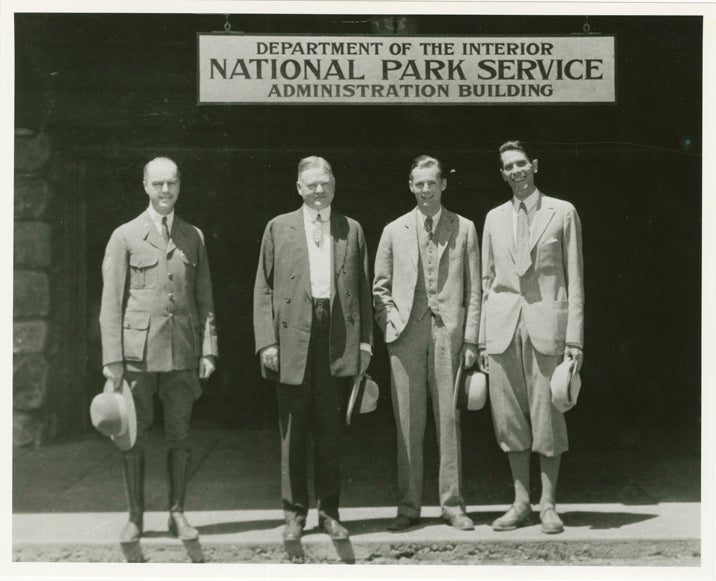
Just five years after the creation of the National Parks Conservation Association (NPCA), a rising politician took over the presidency of the fledgling organization.
He would be the only one who would be able to create national park sites with the stroke of a pen.
Herbert Hoover was chosen as president of NPCA in 1924. He held this position while also serving as President Calvin Coolidge’s Secretary of Commerce.
He Expanded The Scope & Size Of The National Park Service
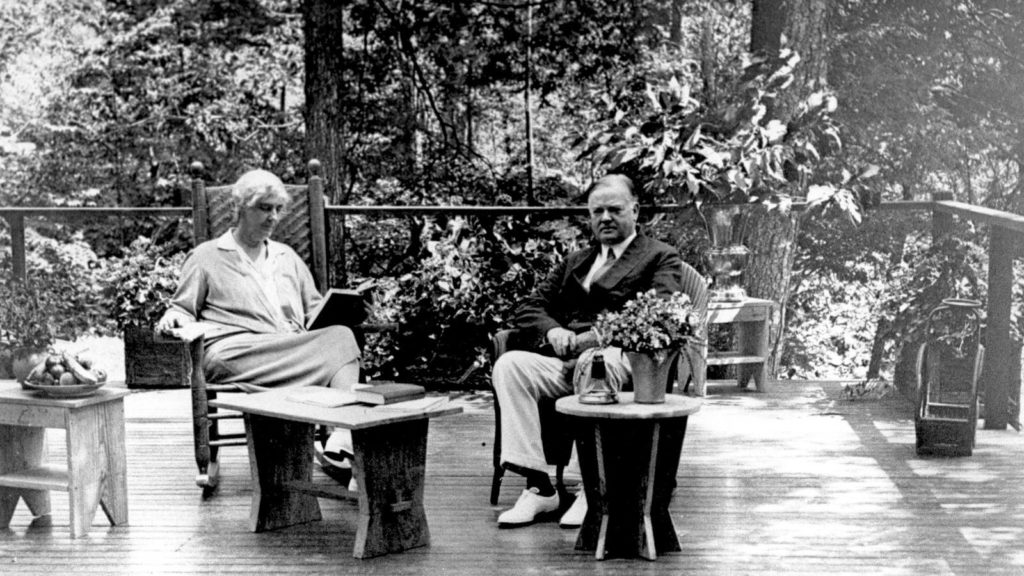
During Hoover’s presidency, appropriations for park operations increased by 70 percent. He also expanded the size of the National Park System by 40 percent.
Hoover used his power under the Antiquities Act to establish national monuments at Arches, Death Valley, Saguaro, Great Sand Dunes and Black Canyon of the Gunnison National Parks.
CHECK OUT: LIST OF 128 BEST US NATIONAL MONUMENTS RANKED
Things To Do At The Site
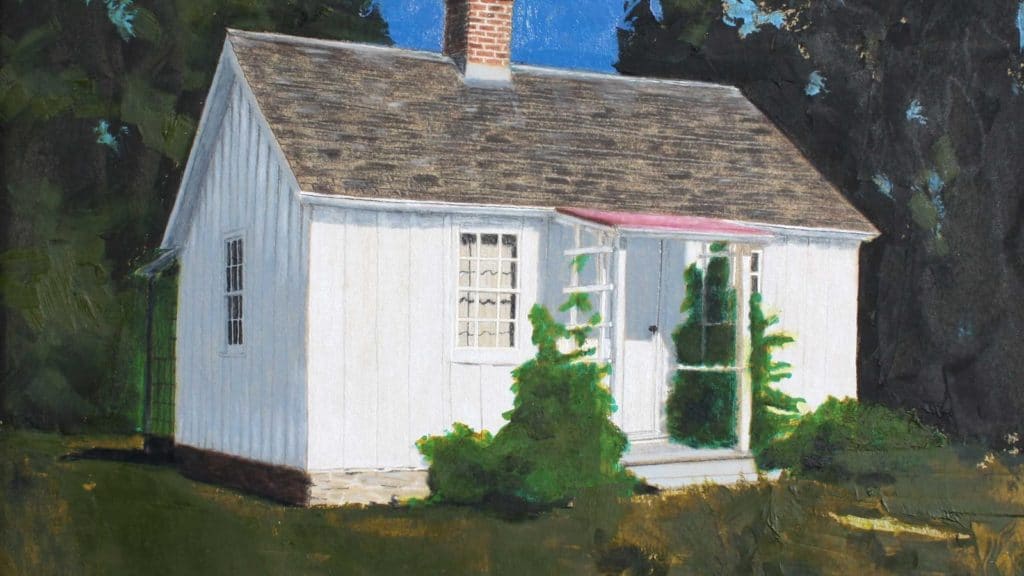
You should set aside at least a half a day as there are various things to do and see at the Herbert Hoover National Historic Site.
I always recommend that first-timers begin at the Visitor Center. While you’re there check out the 12-minute film about the life and times of America’s 31st president.
Visitors can take a self-guided walk of the grounds and historic buildings. You can see the birthplace cottage which was a typical starter home for a young late 19th century family.
Antique furnishings represent common household items of a simply furnished two room rural home. Herbert Hoover referred to his birthplace cottage as “physical proof of the unbounded opportunity of American life.”
This cottage was built by Hoover’s father. Its two rooms were designed for a family of five which certainly taught the future president the value of thriftiness.
Presidential Library & Museum

The Herbert Hoover Presidential Library and Museum contains some fascinating exhibits chronicling the life and times of the president who presided over the worst economic calamity in our nation’s history.
If you’re interested in learning more about our 31st president then I recommend reading Hoover: An Extraordinary Life in Extraordinary Times by Kenneth Whyte.
If You Build It They Will Come
1. Iowa’s Field Of Dreams
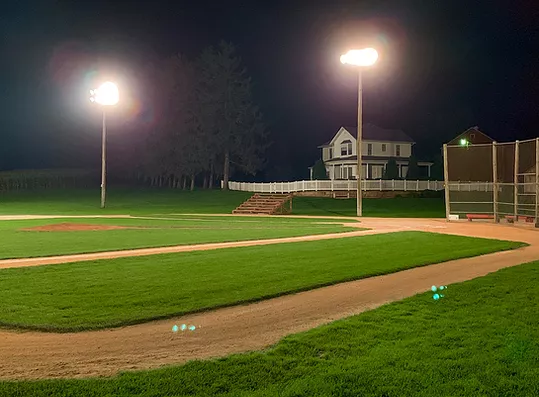
More Than Just Parks has selected as its #1 Historic Site In Iowa the legendary “Field of Dreams.” Why? Because we believe that if they build it you will come.
The Field of Dreams is a baseball field located in Dyersville, Iowa, that was built for the 1989 film “Field of Dreams” starring Kevin Costner. It tells the story of an Iowa farmer who builds a baseball field on his land after hearing a voice in his head that says “If you build it, he will come.”
The movie was set on the farm of the Kinsella family, and the film’s crew built the baseball field on the farm. It was a commercial and critical success and has since become a cult classic.
At the Field of Dreams movie site in Dyersville, Iowa, visitors can:
- Walk or play catch on the famous baseball field.
- Explore the cornfield where the movie was filmed.
- Visit the Field of Dreams museum, featuring memorabilia from the movie and baseball history.
- Take a guided tour of the site.
- Participate in baseball games and clinics.
- Visit the nearby National Farm Toy Museum.
- Walk through the nearby covered bridge and scenic countryside.
Visitors can also rent the field for their own private games or events.

CHECK OUT: ALL 63 US NATIONAL PARKS RANKED BY EXPERTS
List Of Historic Places In Iowa
- Field Of Dreams
- Herbert Hoover National Historic Site
- Mormon Pioneer National Historic Trail
- Effigy Mounds National Monument
- Lewis & Clark National Historic Trail
- Farm House Museum
- Historic General Dodge House
- Buffalo Bill Museum
- Mines of Spain Recreation Area
- Sergeant Floyd Monument & Towboat
Why Trust Us About Historic Sites In Iowa?
We’re Jim Pattiz and Will Pattiz, collectively known as the Pattiz Brothers and we absolutely LOVE the national parks.
You should probably know that we don’t just make this stuff up out of thin air. We’ve spent our entire adult lives exploring and filming America’s national parks and public lands.
We’ve worked with the National Park Service, the Department of Interior, USDA, U.S. Forest Service, and more for years creating films on important places and issues. Our work has been featured in leading publications all over the world and even some people outside of our immediate family call us experts on the national parks.
And, in 2018, our father – having spent a lifetime teaching history – joined us so that he could help us to tell the stories behind these amazing places.
Meet The Parks Brothers
We Hope You’ll Follow Our Journey

Our goal here at More Than Just Parks is to share the beauty of America’s national parks and public lands through stunning short films in an effort to get Americans and the world to see the true value in land conservation.
We hope you’ll follow our journey through the parks and help us to keep them the incredible places that they are. If you’re interested in joining the adventure then sign up below!
Related Links
What Is A National Park? To learn more about the difference between the various National Park Service designations check out our article that explains everything!
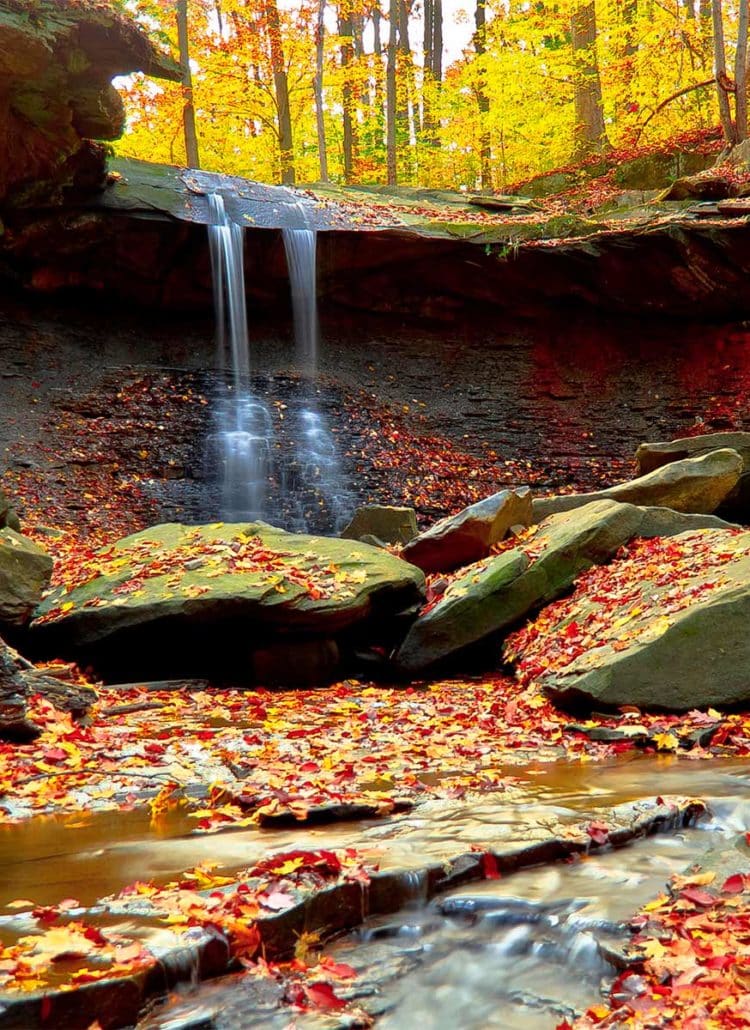

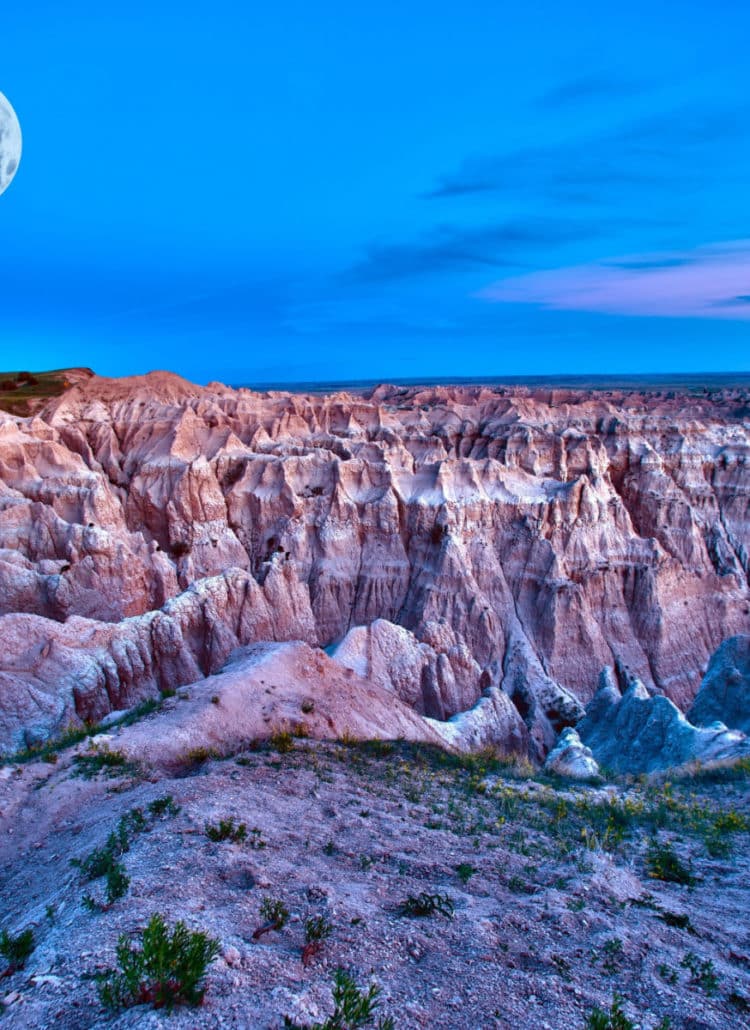


Leave a Reply